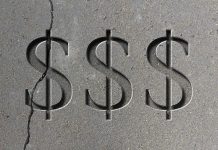Despite risks “titled to the downside near term” amid major trading partners slowing growth combined with trade and technological disputes, the Aussie is holding course, gaining traction among G10 currencies as China’s Huawei Technologies is granted an additional 90 days to do business with US companies. Yet although risks appear to be more balanced than initially considered, the Minutes of the Reserve Bank of Australia from 6 August 2019 meeting confirm that further easing is expected in order to support growth and achieve inflation target band of 2% – 3%. The timing of the easing should occur between October and November, as the RBA is likely to wait for the Fed monetary policy meeting on 18 September 2019 before taking major steps. The presence of RBA Governor Philip Lowe among other international central bankers to the annual Jackson Hole symposium on Friday might also shed light on the timing of central banks’ easing. For now, the Australian dollar will hold up – although the effective rise of US tariffs on Chinese imported goods next Sunday should definitely favor a risk-off trend.
The August RBA Board Minutes confirmed that it would consider “further easing if the accumulation of additional evidence suggested this was needed to support growth and achieve inflation target”, also pointing out that there is “more spare capacity in the labor market than previously appreciated”, thus maintaining an easing bias, as expected. Additionally, the RBA noted that the property market still requires some time before stabilizing and resume an increase in construction activities while commodity prices have been generally falling compared to July meeting. Meanwhile, PM Scott Morrison’s coalition tax cut of AUD 158 billion validated by the Senate in early July 2019 and AUD 100 billion infrastructure spending plan give good support to domestic consumption, improving the growth outlook of the economy. As a result, it is unlikely that the RBA’s Cash Rate will be reduced to 0.75% in September and should be cut in October or November instead. In current situation, the AUD is expected to stay still short-term as the lack of economic publications and headlines should support positive sentiment. However, further upside appears less realistic.
Currently trading at 0.6774, AUD/USD is heading along 0.6765 short-term.













